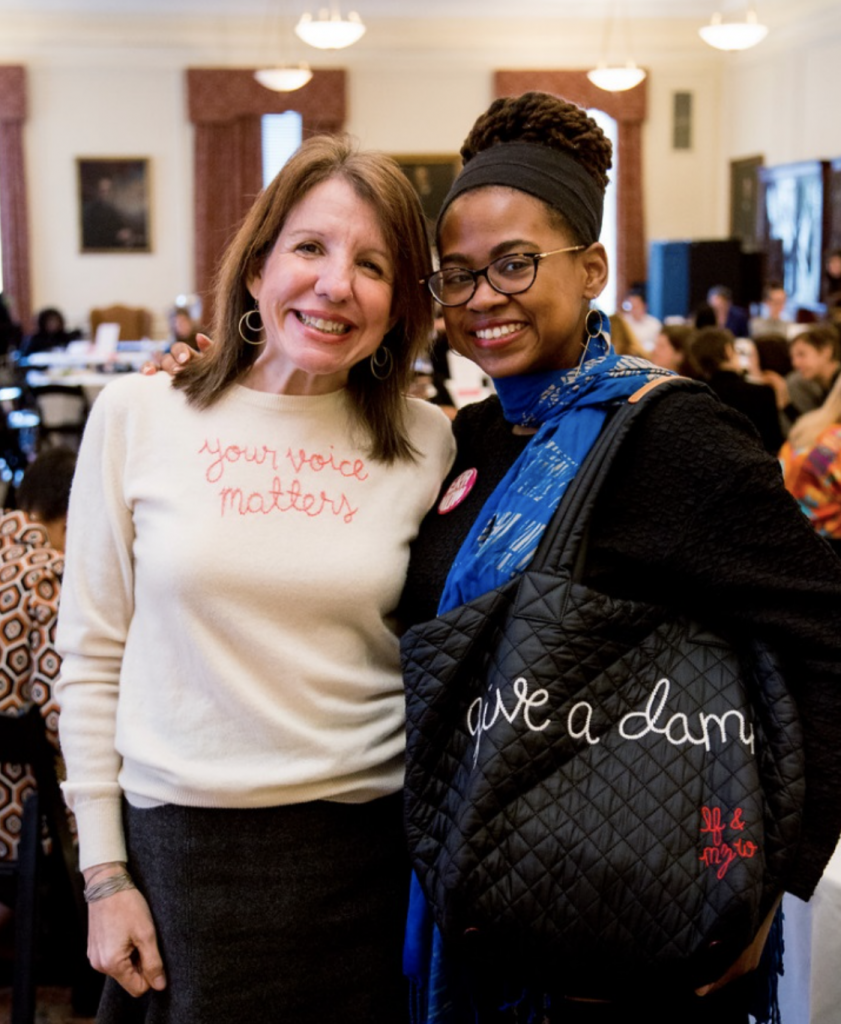
Though a robust national campaign for the Equal Rights Amendment conceded defeat in 1982, today’s vibrant era of activism—catalyzed by the #MeToo and Time’s Up movements—has given new life to the fight for the ERA. We are now just one state away (Go, Virginia!) from the 38-state ratification threshold.
Even with vast changes in American life and law since the 1980s, the ERA is still sorely needed. Enshrining gender equality in the Constitution goes beyond a matter of principle—it would also offer a host of legal remedies to gender-based disparities, including discrimination in the workplace and the injustices that face survivors in our rape culture. And it would be a major boon to the emerging movement for menstrual equity.

On any given day, there are eight hundred million people on the planet menstruating, and at least five hundred million of them lack adequate resources for managing their periods like basic supplies, facilities, information and support. Stigma, often rooted in misogyny, drives the problem, and so does disproportionate poverty among women and girls. The result is the denial of key opportunities for equality—educational, economic and social—for menstruators.
The United States is not immune to this problem. For the nearly one in five American teenagers who live in poverty, lack of menstrual products and support can lead to compromised health, lost classroom time and even disciplinary intervention. Those experiencing homelessness report isolation and/or infection caused by using tampons and pads for longer than recommended, or by improvising with items such as paper bags or newspapers. And incarcerated individuals and those held in detention or correction systems must too often beg or bargain for basic menstrual hygiene needs that may still may be denied to them—part of a degrading and dehumanizing power imbalance that permeates their time in prison.
But over the last three years policy, the movement for menstrual equity in the U.S. has gained extraordinary bipartisan traction. Laws mandating menstrual access and affordable products have been enacted in major cities like New York, Chicago and Los Angeles; in more than a dozen states; and even by the current U.S. Congress. Advocates crafting and advancing this agenda have succeeded in convincing lawmakers that menstrual policy is a critical component of gender equity and equal opportunity.
Last summer, Rep. Carolyn Maloney (D-NY) stepped up as the first lawmaker to put forth the proposal that disparities caused by menstruation be included in the ERA platform. Her announcement coincided with her release of a report showing that gender-based pricing remains prevalent in the U.S. “The ERA would mean that women would no longer have to fight the pink tax product by product, or fight the gender pay gap job by job or employer by employer,” Maloney noted, “and it would solve intractable problems that a piecemeal approach cannot.”
The tampon tax is just one example of the insidious practice by which companies charge more for items marketed to women than similar gender-neutral products or those marketed to men—and it’s just one aspect of menstrual equity which would be addressed by the sweeping reach of the ERA.
Back in 1978, in the height of ERA organizing, Gloria Steinem penned an essay for Ms. called “If Men Could Menstruate.” The brilliant turned the table on patriarchy and oppression: “What would happen if suddenly, magically, men could menstruate and women could not?” Steinem posited. “Menstruation would become an enviable, worthy, masculine event.”
Steinem goes on to describe all the ways society would normalize and celebrate menstruation: “Men would brag about how long and how much.” “Sanitary supplies would be federally funded and free.” “Generals, right-wing politicians and religious fundamentalists would cite menstruation (‘men-struation’) as proof that only men could serve God and country in combat (‘you have to give blood to take blood’), [or] occupy high political office (‘can women be properly fierce without a monthly cycle governed by the planet Mars?’).”
Steinem’s “wish list” item for federally and publicly funded menstrual products is now real, and the ERA can help us further actualize it. The inclusion in the ERA of a full range of menstrual access issues will help achieve more uniform outcomes and raise the visibility of matters of bodily integrity, health and dignity in a way that fuels further innovation and intervention. Linking menstruation to the renewed fight for the ERA will ensure that this core need is addressed within the umbrella of protections that the Amendment would provide—and, in return, the popular and bipartisan nature of menstrual equity advocacy offers politically salient arguments to the campaign to ratify the ERA.
We’ve got a winning combination here, and a chance to fully acknowledge that we cannot achieve true gender equality without considering menstrual equity—both of which are necessary to advance economic equity, ensure educational and employment opportunities and accelerate the push for women’s agency and equality. That’s why this weekend and in the weeks, months and years to come, I’ll be marching on—for menstrual equity and for constitutional equality.





